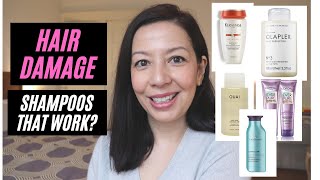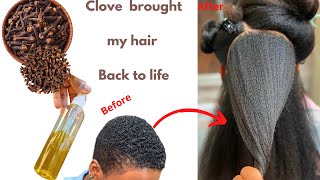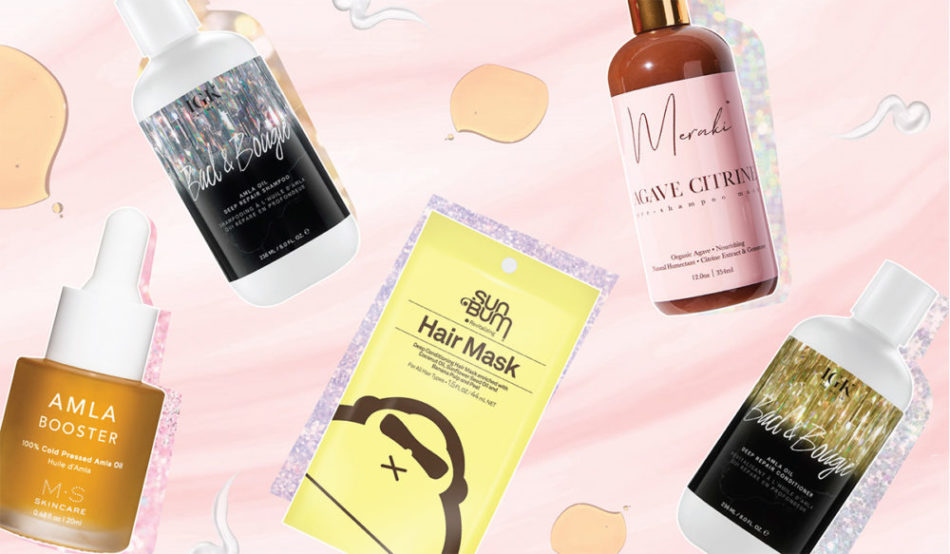This Ingredient Is Causing Dry Hair Issues With A Growing Number Of Naturals

Contents:
- What’s The Fuss About?
- Characteristics Of The Ingredient
- What The Research Shows
- Conclusion
Is this substance listed on the ingredient list of your favorite products? Have you been having problems with dryness? A growing number of naturals have been reporting that their hair seems to be getting drier and perhaps this ingredient is to be blamed.
What’s The Fuss About?
It is a substance often used in products labeled as all natural and hypoallergenic. It is reportedly found in up to 40% of beauty products as it is used as a stabilizer to balance the pH of the product and stabilize fats. Simply put, it helps break down molecules of products to allow them to blend out for a smooth finish. It’s even in your favorite Eco-Styler gel.
It is common in topical hair and skin care products because manufacturers feel that nitrosamines, which it has the potential to create, cannot penetrate the skin. Usually, it is said that it is not used in amounts above 1%. it sometimes adds fragrance to lotions or hair potions, lengthens the shelf life of products and can most likely to be found in foaming products, products that rinse off, eye shadow, mascara, sunscreen, foundation, and concealer.
The ingredient is triethanolamine also referred to as TEA.
It is common in topical hair and skin care products because manufacturers feel that nitrosamines, which it has the potential to create, cannot penetrate the skin. Usually, it is said that it is not used in amounts above 1%. it sometimes adds fragrance to lotions or hair potions, lengthen the shelf life of products and can most likely to be found in foaming products, products that rinse off, eye shadow, mascara, sunscreen, foundation, and concealer.
Characteristics Of The Ingredient
The popular ingredient is a by product of two substances considered to be toxic: ethylene oxide and ammonia. It is viscous and has a slight whiff of ammonia. The composition of the substance makes it carcinogenic if combined in products with N-nitrosating agents which can for nitrosamines. You might be interested in browsing the synonyms for triethanolamine to see if they are in your daily personal care or hair care products.

What The Research Shows
We don’t want to send you into a wild panic but to be forewarned is to be forearmed. With that said, it has been shown that over time, Triethanolamine makes your hair drier, so if you are a wash n go person who loves your Eco- styler and you’ve been noticing that your hair has been getting drier, you might want to pay attention to how often you do that style, or try to seek out alternatives for the Eco gel.
Initially, I thought “I hardly think that the dosage used is high enough or else they would not have approved it to begin with.” Well, after digging through all the research I am not so sure anymore because clinical studies in animals have revealed that Triethanolamine TEA is an immune system and respiratory toxicant.
It can cause irritation of the skin, hair and eyes and inflammation even in short term use. If that wasn’t bad enough, it also causes liver, bladder and testicular cancer and it may cause genetic mutations. While short term use may not result in the worst case scenario, in the long term, exposure to TEA may cause brittle hair, itchy skin and eventually, the list of bad news previously mentioned. An article on thedermreview backs up these claims.
The FDA gives the approval for the ingredient to be used in small doses but because of its toxicity, it doesn’t allow for more than 5% in a product. The trouble with this is that if you use up to 4 products with TEA to achieve a style and each has 1.5% you would have exceeded the 5% recommended by the FDA.
Interestingly, Triethanolamine is also used as a food additive Everything Added to Food in the United States (EAFUS). I don’t know about you but it makes me wonder why they would allow for ‘everything to be added to food’. Could it be a deliberate exposure to harmful chemicals so that they can study the effects and keep big Pharma rolling in dough?
Right now it sounds almost like a conspiracy theory but if that’s the case, we’ve been unknowingly participating by virtue of the fact that we have been voluntarily buying the products that have the questionable substances. In fact, research mentions findings of human exposure to the ingredient. It makes you wonder if people volunteered to do the study knowing the possible consequences, or if these findings were recorded without them even knowing they were subjects.
The more you think about it, the more questions arise. The clinical studies that have us all antsy every time we hear of a dangerous substance in our products, were conducted on animals.
If you do a basic google search on animal studies you will find several academic papers that decry the supposed usefulness it has. In other words, many of these animal studies are ineffective and serve only as insurance for scientists to say that they conducted trials prior to releasing a product on the market, just something to tick off their to-do list and indemnify them from the full brunt of lawsuits if things start going south. If you have never given thought to it or if you are skeptical just check for yourself, then consider just how credible the findings are.
On the flip side, if we opt to believe that animal trials that produced adverse findings are rendered inconclusive because animal testing is unreliable, can we really say that the findings wouldn’t be worse if tested on humans?
It can be overwhelming trying to keep tabs on every single ingredient in our products and food; in fact, if we are not careful we can become paranoid about it, but it is important that we remain vigilant when it comes to what we allow to enter or apply to our systems. It has become increasingly evident that those charged with the job of helping us safeguard our health may be compromised owing to other factors (the almighty dollar anyone?).
Conclusion
If today’s post leaves you with more questions than answers it’s probably a good thing. It is a fact that consistent long term exposure to triethanolamine in hair care products can result in dry, brittle hair, scaling and inflammation of the scalp, and irritation. It is also a fact that the FDA really doesn’t give this ingredient a fully safe rating, but they don’t consider the possibility of consumers exceeding the 5% limit out of ignorance.
If they have considered the possibility but allow it anyway, what exactly does that mean? As consumers of commercial products, we can never avoid the scientific element that comes along with it. The sad reality is that many of us often hear that there is a hot new product that works and we run with it.
When was the last time you took note of what is on the ingredient list? In the final analysis, the onus is on you to ensure that you do all you can to be safe. It is getting harder to do, but we must never give up. It appears that the best way to ensure that your products are safe is to make them yourself.




